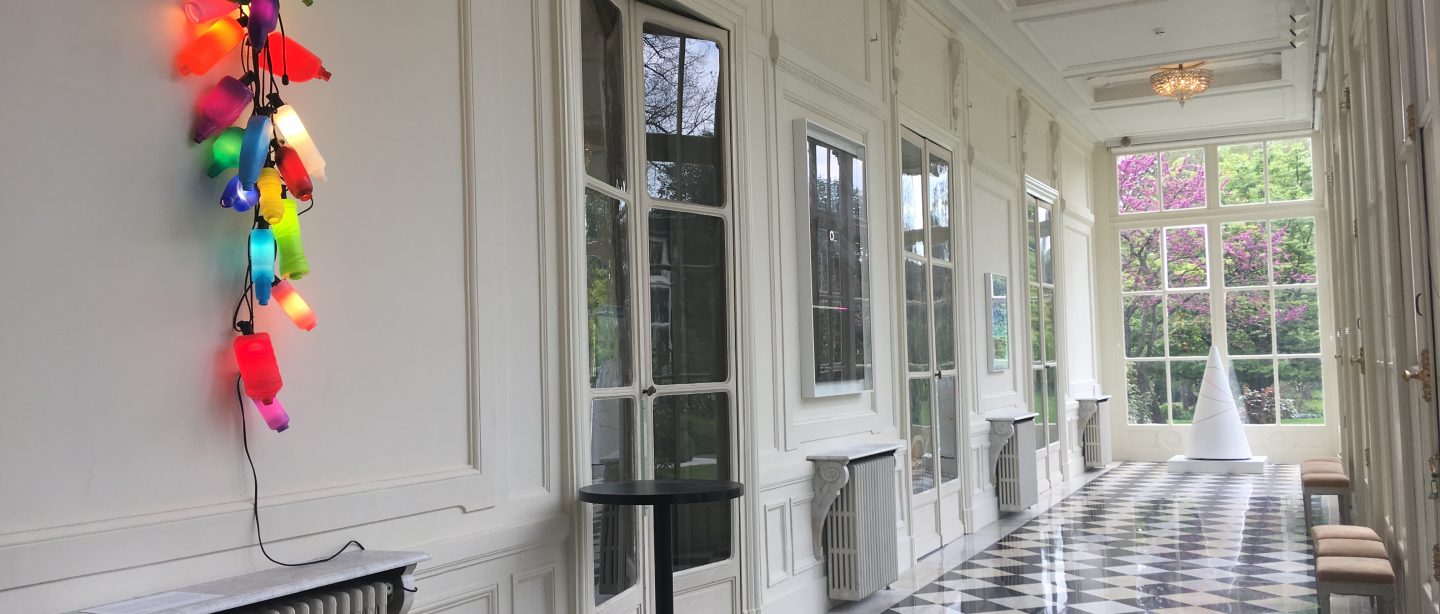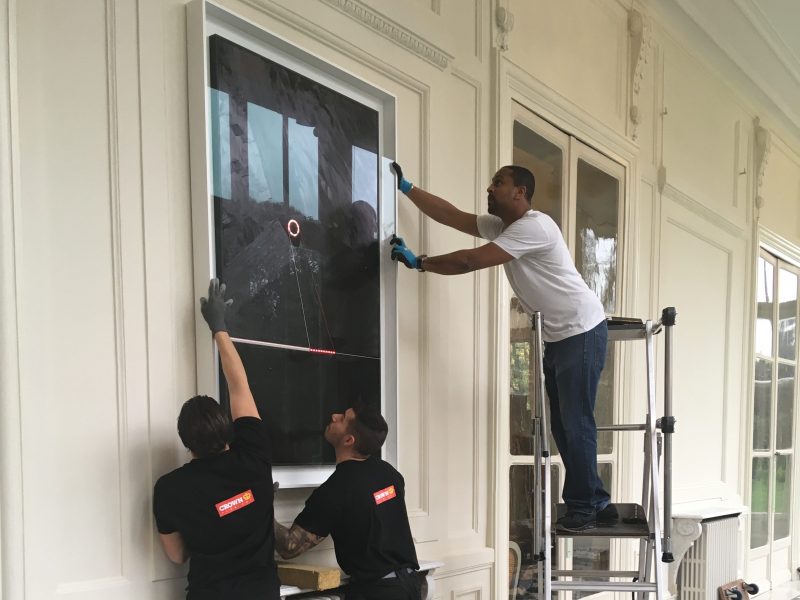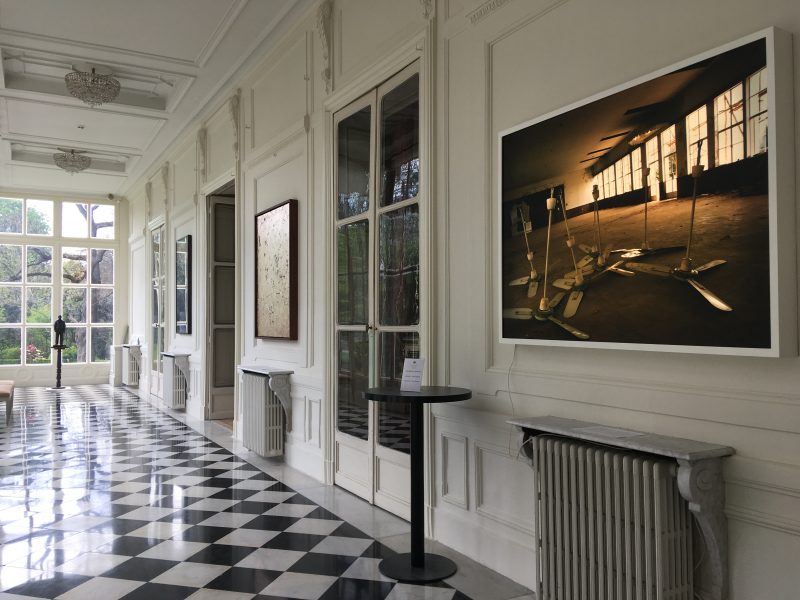Curating the Contemporary Display for the Paris Embassy
The display of contemporary art in the Glazed Galleries of the British Residence in Paris changes each time a new Ambassador takes up post. Find out more about these galleries and hear from our Deputy Director and Senior Curator on what is needed to curate this space.
About the Glazed Galleries
Arguably the UK’s most sumptuous diplomatic building, the Ambassador’s Residence in Paris has a long and fascinating history. It hosts numerous events on a daily basis, from small but significant meetings with heads of state or royalty, to large social gatherings in the garden. Nearly twenty thousand people pass through the door of the celebrated Faubourg St Honoré Residence each year.
Contemporary artworks converse with historic art, artefacts and architectural features at the Residence. The building is ripe with significant historic art works from the Collection, many of which document key moments in the diplomatic relationship between Britain and France. In one of the guest rooms, an aquatint by Auguste Charles Pugin and Joseph Constantine Stadler titled, The House in Portman Square of His Excellency L. G. Otto, Minister Plenipotentiary from the French Republic, to the Court of Great Britain as it appeared on the night of the general illumination for Peace, the 29th of April 1802, evokes a celebration following the signing of the Treaty of Amiens between Joseph Bonaparte and Marquess Cornwallis, which had allowed a pause in the Napoleonic wars.
The famed Glazed Galleries comprise three connected, long, glazed rooms which form a ‘C’ plan. Attached to the back of the building, they face ‘the enviable, vast green lawn that hides in central Paris’. Over twenty years ago these rooms housed historic portraits, dark wood furniture and lace curtains. The Collection Director Penny Johnson took the decision with former British Ambassador, Sir Michael Jay, to turn the galleries into a contemporary space, showcasing art relevant to today and reflecting a forward-looking Britain.

The Glazed Galleries at the Ambassador's Residence in Paris with Walldella VI, a light sculpture by David Batchelor, and Clear Red Koan, a kinetic sculpture by Liliane Lijn
Working the space...and a sleepover in Paris
Deputy Director and Senior Curator of the Collection, Eliza Gluckman, talks about her approach to curating the the Glazed Galleries in 2019, how the Collection delivers these displays and a necessary perk of the job:
‘As curator of this project it was important to understand this beautiful yet complex space. At the Collection we are used to working in a non museum environment and with each new display we have to gain an understanding first of the function of the space. This helps us to make decisions about which works will make an impact and also to make sure the works are not at risk of damage.
Our selection aims to bring together works that have a relationship to one another and to create a dialogue that we hope a visitor will be curious to explore further… The latest display was installed in 2019 and was selected in conversation with the British Ambassador to France, Edward Llewellyn, both in situ and during a visit by him to the Collection. It is incredibly important that anyone involved in a selection can physically see the works in order to really understand their impact, scale and texture. In this case I chose to focus on the glazed nature of the space which offers both a lot of natural light, and also the presence of night. A few works that had entered the Collection in the past couple of years were obvious starting points for this selection; notably Haroon Mirza’s Energy Power (Solar Powered LED circuit 36) which reacts to light by way of it’s solar panel base and LED lights. The wide, long spaces offer long vistas that frame sculptural work perfectly. In this case we were able to show a kinetic cone work from 2008 by Liliane Lijn, that glows at night.
Once the selection is agreed the Collection management mechanics get into motion. Works are assessed by the technicians and the Head of Collection Care: Are they suitable for the space? Do they need framing? How will we hang them? The Registrars arrange transport and contract a local company to hang the works. In this case I was accompanied by our Collection technician Anthony Lindsay who knows the works well and oversaw their installation. We happened to coincide with a fleeting visit by the then Prime Minister Theresa May, on our first day, so the working day was cut short. Being flexible is very much part of the job!
Retreating to our rooms in the 18th century mansion is a perk of the job. When travelling to visit these spaces of international exchange, it is important to understand how they work and there is no better way to do that than staying in the building. Every Residence and Embassy is run differently, and each location is influenced in different ways by the country it is in, as well as the character of the Ambassador. Getting an understanding of how a space is used, and the culture of the country the building is in, is important. It is as key as seeing the art work in the flesh. The presiding memory of my first long haul visit to a UK embassy abroad was arriving at the Tokyo Residence one morning and finding myself that evening at an event celebrating Wales, watching an elderly Japanese Welsh Male Voice Choir. Add jetlag to that, and it can sometimes make the job seem somewhat surreal!’
Edited by Dr Claire FitzGerald, Curator (Modern and Contemporary)

